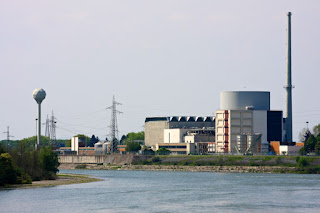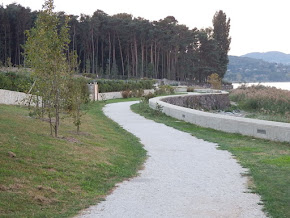Riccardo Patrese - racing driver
Former Williams ace was first in Formula One to start 250 races
The racing driver Riccardo Patrese, who for 15 years was the only Formula One driver to have started more than 250 Grand Prix races, was born on this day in 1954 in Padua. The former Williams driver reached the milestone in the German Grand Prix of 1993, having three years earlier been the first to make 200 starts. Patrese retired at the end of the 1993 season with his total on 256 and his record of longevity was not surpassed until 2008, when the Brazilian driver Rubens Barrichello made his 257th start at the Turkish Grand Prix. Ferrari ace Michael Schumacher passed 250 two years later and Patrese’s total has now been exceeded by six drivers, Jenson Button, Fernando Alonso, Kimi Raikkonen and Felipe Massa having all joined the 250 club. Patrese also became famous for an unwanted record, having gone more than six years between his second Grand Prix victory in Formula One, in the 1983 South African GP, and his third, in the San Marino GP of 1990. He enjoyed his most successful years while driving for Williams between 1987 and 1992, finishing third in the drivers’ championship in 1989 and 1991 and runner-up in 1992. Read more…
_____________________________________
Gianni Raimondi – tenor
Brilliant performer left few recordings of his voice
Opera singer Gianni Raimondo, who on his first appearance at La Scala in Milan sang opposite Maria Callas in a production by Luchino Visconti, was born on this day in 1923 in Bologna. Raimondi was admired for his brilliant top notes and exquisite phrasing when he performed. Opera fans have been disappointed that more recordings of his performances were not made at the time. After studying voice in Bologna and Mantua, the tenor made his stage debut at the Teatro Consorziale in Budrio a small town near Bologna, in 1977 as the Duke in Giuseppe Verdi’s Rigoletto. The following year in Bologna he sang the part of Ernesto in Gaetano Donizetti’s Don Pasquale and was then chosen for the premiere of Il contrabasso by Valentino Bucchi at the Teatro della Pergola in Florence. In 1956 he made his La Scala debut opposite Callas in Verdi’s La traviata and the following year sang opposite Callas again in Donizetti’s Anna Bolena. He was also successful at La Scala in Gioachino Rossini’s Mosè in Egitto and Semiramide and as Rodolfo in Giacomo Puccini’s La bohème. Raimondo made his American debut in 1957 in San Francisco and then took part in La bohème at the Staatsoper in Vienna. Read more…
_____________________________________
Graziella Sciutti - operatic soprano
Vivacious performer who became a successful director
The operatic soprano Graziella Sciutti, a singer known for a vivacious stage presence and engaging personality who excelled in the work of Mozart, Puccini and Verdi, was born on this day in 1927 in Turin. The daughter of an organist and pianist, she grew up in a bilingual household, speaking both Italian and her mother’s native tongue, French. Her early childhood was spent in Geneva in Switzerland before the family moved to Rome, so that she could attend the Accademia di Santa Cecilia, which is one of the world’s oldest and most prestigious musical institutions. Sciutti wanted to play the piano like her father but it became clear she had a notable voice and she caught the eye as a soloist when she was still a student. She was asked at the last moment to appear in a performance of Bach’s St Matthew Passion, conducted by Herbert von Karajan, the up-and-coming Austrian who would become one of the greatest conductors in the world. It was a daunting prospect, forced on her at short notice after another singer became ill, but she rose to the challenge and won accolades as a result. It led her to be spotted by Gabriel Dussurget, founder and leading light of the Festival at Aix-en-Provence Festival. Read more…
_____________________________________
Giovanni Riccioli – astronomer
Jesuit priest had a crater on the moon named after him
Giovanni Battista Riccioli, a Jesuit priest who became one of the principal astronomers of the 17th century, was born on this day in 1598 in Ferrara. He was renowned for his experiments with pendulums and falling bodies and for his studies of the motion of the earth and the surface of the moon. Riccioli entered the Society of Jesus when he was 16 and after completing his training began studying the humanities. Between 1620 and 1628 he studied philosophy and theology at the Jesuit College in Parma, where he was taught by Giuseppe Biancani, who had accepted new ideas such as the existence of lunar mountains. After Riccioli was ordained he taught physics and metaphysics at Parma and engaged in experiments with falling bodies and pendulums. He is believed to be the first scientist to measure the rate of acceleration of a freely falling body. He also carried out observations of the surface of the moon. Riccioli became more committed to studying astronomy than theology and his superiors in the Jesuits assigned him to carry out astronomical research. He went to work at a college in Bologna where he built an observatory. Read more…

.jpg)

.jpg)





.jpg)



.jpg)


.jpg)

.jpg)




.jpg)


.jpg)


_-_cropped.jpg)

